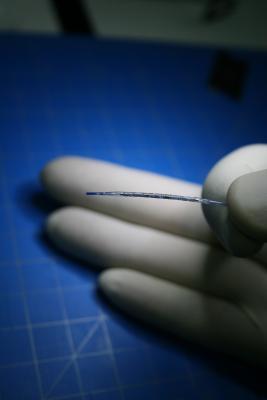
June 13, 2013 — Tryton Medical Inc. announced that the Nordic-Baltic Bifurcation Study Group will investigate the Tryton Side Branch Stent. The trial is a prospective, controlled, randomized, multicenter clinical study examining the role of final kissing balloon inflations in patient outcomes. A total of 150 patients will receive the Tryton Side Branch Stent with a drug-eluting stent, with evaluation by intravascular optical coherence tomography (OCT) imaging technology.
The announcement was made at EuroPCR 2013, the annual meeting of the European Association of Percutaneous Cardiovascular Interventions.
"The use of a dedicated bifurcation stent, such as the Tryton Side Branch Stent, is a natural evolution for the Nordic-Baltic Bifurcation Study Group," said Jens F. Lassen, M.D., of the department of cardiology, Aarhus University Hospital, Skejby and principal investigator for the study. "The trial will examine if we can maintain the superb results reported thus far in the literature with the Tryton Stent utilizing a streamlined treatment protocol. Additionally, the study group looks forward to utilizing OCT to better characterize complex bifurcation treatment strategies."
The Nordic-Baltic Dedicated Bifurcation Trial is the latest investigation from the study group, which has a history of examining different techniques for treating bifurcation lesions in the Nordic I, II, III and IV studies. The publications associated with these studies are among the most frequently cited by interventional cardiologists.
"Tryton Medical is honored the prestigious Nordic-Baltic Bifurcation Study Group has chosen to examine the market-leading Tryton Side Branch Stent in this trial," said Shawn McCarthy, CEO of Tryton Medical. "We are a company committed to investing in evidence-based care as demonstrated in our extensive real-world global registries, our randomized U.S. pivotal study, and, now, with these world-class investigators studying the optimization of the Tryton Stent in bifurcations."
The Tryton Side Branch Stent is supported by clinical evidence in more than 1,000 patients. Published data in a patient pooled analysis from more than 900 patients treated with the Tryton Side Branch Stent in more than eight European post-marketing registries demonstrated low target lesion revascularization rates of 2.9 percent at six months and 4 percent at one year, and a low 0.5 percent thrombosis rate at one year. More than 7,500 patients have been treated with the Tryton Side Branch Stent and it is commercially available throughout Europe, Russia and the Middle East. The Tryton Side Branch SHORT Stent was introduced at EuroPCR, enabling physicians to broaden treatment options in bifurcations in large vessels with a short main branch landing zone.
The Tryton Side Branch Stent is an investigational device in the United States. Tryton has completed enrollment in the first and only randomized controlled U.S. IDE pivotal clinical trial evaluating a dedicated bifurcation stent and anticipates study outcomes will be presented at TCT 2013 in San Francisco.
For more information: www.trytonmedical.com


 November 18, 2024
November 18, 2024 







